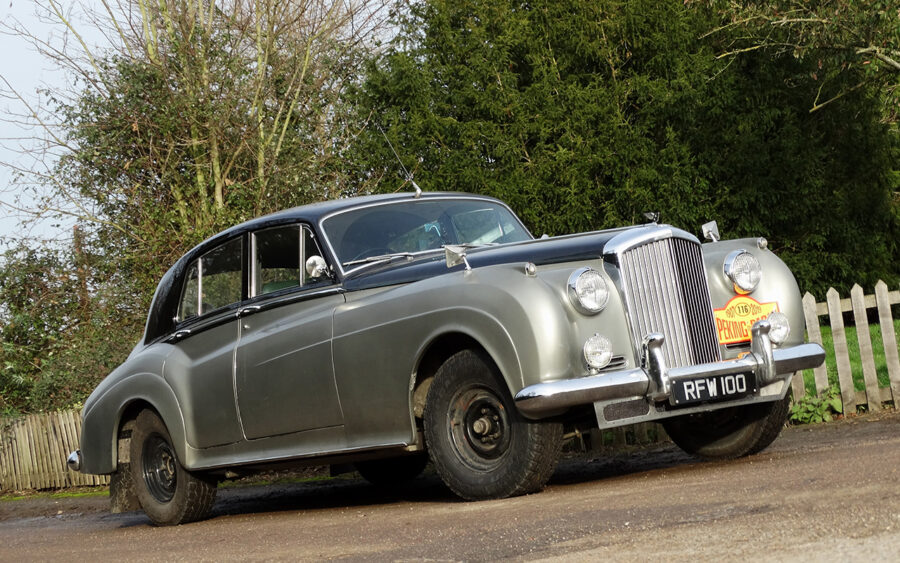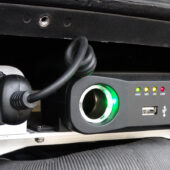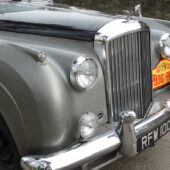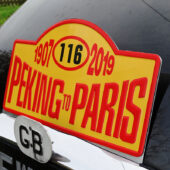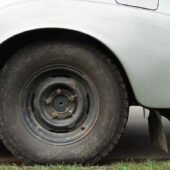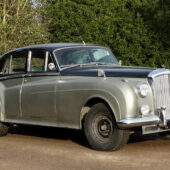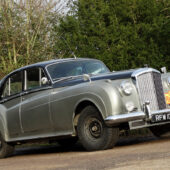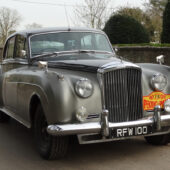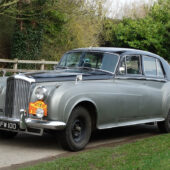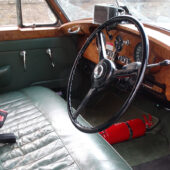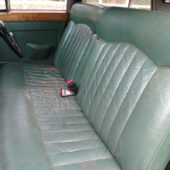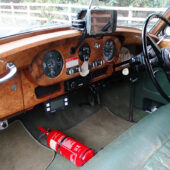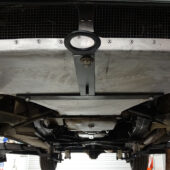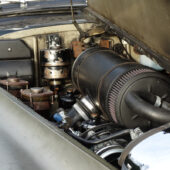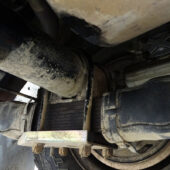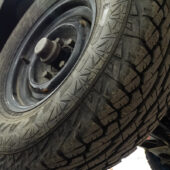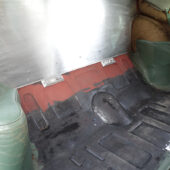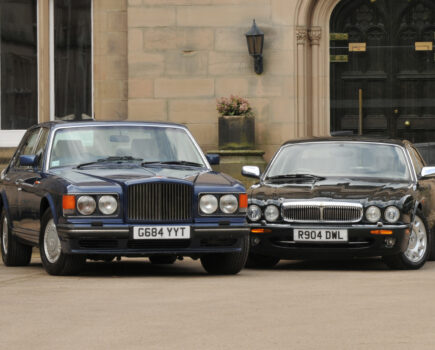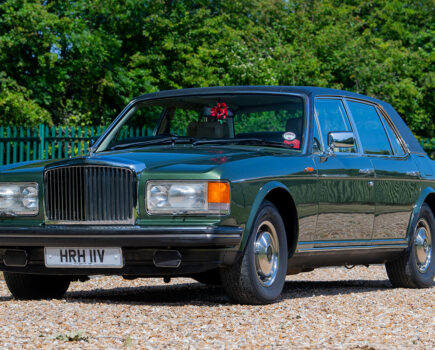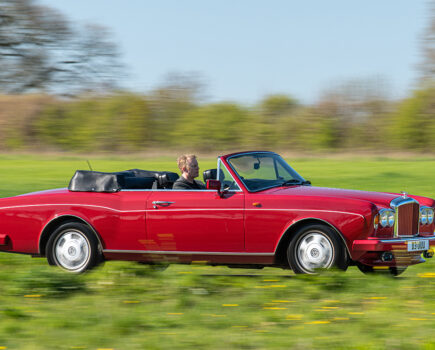A Bentley S1 might not seem the most obvious car in which to tackle an international rally, but this specially prepared example is different from the norm
Words and images: Paul Guinness
I’m no stranger to the Bentley S1, having experienced numerous examples over the years. It’s a model (along with the original Silver Cloud) that I have a particular penchant for, having always admired the smoothness and relative simplicity of the straight-six powerplant that predated Rolls-Royce’s all-new V8 of 1959. With most of my time spent aboard an S1 being a somewhat sedate experience, however, I was intrigued to hear about the example you see here. This, you see, is an S1 with a difference.
We all know that classic Bentleys are a major force in international rallying, although most of those we see tackling the toughest terrain around the world are of the vintage variety. Look at any historic rally entry list and you’re likely to find a handful of Bentley 4 Litres (and their contemporaries) taking part. Indeed, a whole cottage industry exists in the UK dedicated to preparing vintage Bentleys for these truly arduous rallies. In this instance, however, the vehicle in question is a 1958 S1 – an arguably surprising choice for one of the most challenging rallies on the international scene.
This very car travelled to Beijing ready for the start of Peking to Paris 2019, a modern-day challenge that follows in the tyre tracks of the original rally from the early days of motoring. Organised by the Endurance Rally Association (ERA), this year’s Peking to Paris is the seventh event of its type since its reintroduction, and is open to any pre-1976 classic. Needless to say, though, not every car can cope with such a challenge, with even the ERA admitting that Peking to Paris is the “longest and perhaps the toughest driving challenge for vintage and classic cars”.
The 1955-59 Bentley S1 was, of course, a robustly engineered saloon even in standard factory-built spec, a car designed for covering long distances in comfort, style and at decent speed. What it wasn’t designed for though, was more than a month’s worth of non-stop abuse over thousands of miles of arduous terrain. It’s the kind of torture likely to cause issues even for a car as strong and reliable as a Bentley, particularly one that’s already experienced more than sixty years of motoring.
Intrepid brothers Doug and Mike McWilliams inevitably enjoy a challenge, hence their decision to tackle the Peking to Paris event in 2019. What was particularly interesting, however, was their idea that a Bentley S1 would be the perfect vehicle for driving from China to France as quickly as possible, taking in Mongolia, Kazakhstan, Russia, Belarus, Lithuania, Poland and Germany along the way. It was an unusual choice of vehicle, albeit an intriguing one.
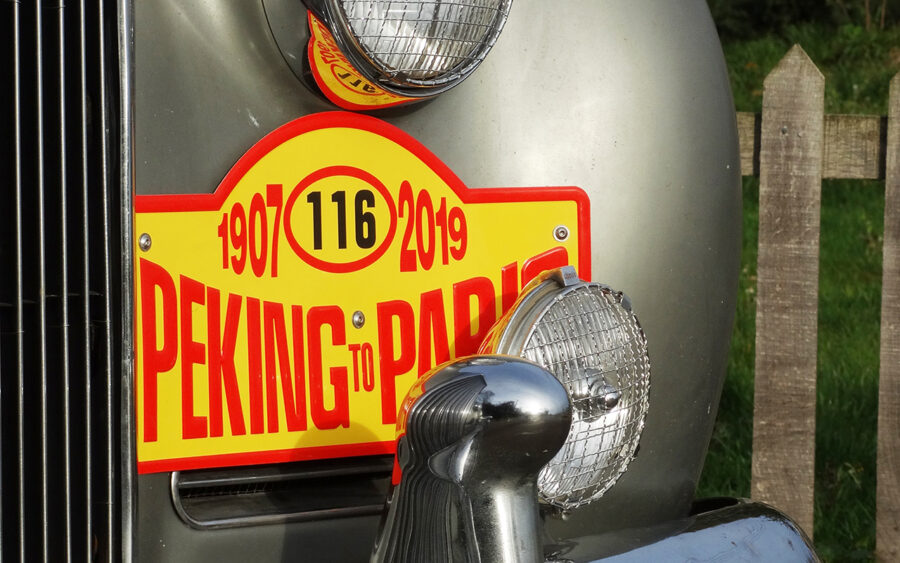
Finding the ‘right’ example for sale was the first step, as the brothers needed a car that was good, solid, up and running but obviously not so immaculate that it found itself at the top end of the Bentley S1 price scale. But once the ideal example had been located, they then turned to Jeremy Padgett of Lincolnshire-based Padgett Motor Engineers, entrusting him with the preparations for Peking to Paris 2019. His task? To ensure that the Bentley was not only made robust enough to cope with the countless challenges ahead, but also modified in order to comply with the strict regulations stipulated by the ERA.
Jeremy has been involved in the world of classic Bentleys for his entire career, and in 1995 took over the company that his father, Alan, had founded 38 years earlier. Alan had become involved with racing Bentleys after buying a 1926 Speed Model 3 Litre, and eventually worked on some very interesting examples – including the legendary ‘Old Number One’, plus the Birkin ‘Blower’ (UU 5872) when it was owned by Stanley Sears. He subsequently undertook work on many BDC members’ well-known cars, helping to establish Padgett Motor Engineers as a highly respected specialist in vintage Bentleys, with Jeremy eventually joining the family firm full-time from the beginning of 1978.
By that stage, the company had also become a major force in the world of Bentley Specials, building many cars that are still racing to this day. Alan and Jeremy spotted another opportunity, however, via increased interest in upgrading R-Type Continentals to rally specification, and Padgett Motor Engineers soon established a reputation for the quality of such work. Jeremy has since prepared numerous examples that have gone on to be successful in historic rallying, and in recent years he and his team have dedicated their time and expertise to around 25 Continentals. These have ranged from the restoration of ‘standard’ examples through to full-scale modifications for international competition, with numerous Padgett-prepared cars successfully competing in historic rallies around the world.
It goes without saying that, compared with an R-Type Continental, an S1 saloon with standard factory bodywork is relatively commonplace. It’s not the type of Bentley that Padgett Motor Engineers tend to see in their workshops on a regular basis. But with the company having so much experience when it comes to rally-preparing some of the finest coachbuilt Bentleys, it’s little wonder that the McWilliams brothers approached Jeremy with the inevitably question: “Can you build us an S1 that can compete in – as well as complete – the Peking to Paris?”
Getting the Bentley to this stage wasn’t easy, with Jeremy and his team facing a vast list of rally regulations supplied by the ERA, in addition to the non-compulsory modifications deemed essential if the car is to stand a chance of competing successfully.
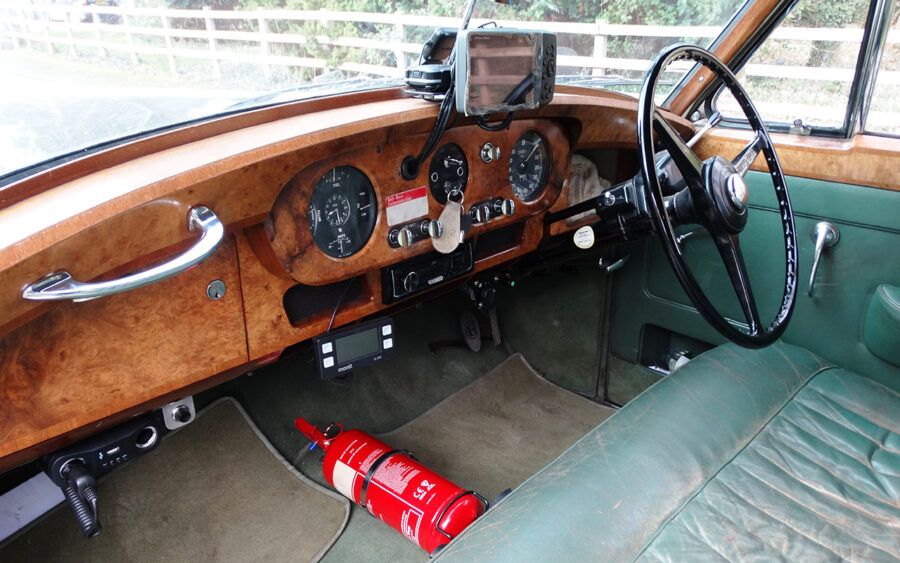
The most obvious visual change is to the S1’s ride height, with the car now sitting roughly 2.5 inches higher than standard thanks to the fitment of bespoke front springs and heavy-duty rear leaf springs. Indeed, the springs used all round are just about the most robust that can feasibly be fitted, helping to ensure that the Bentley copes with some of the most rutted roads on the planet (although to call them roads is perhaps being over-kind). To complement the uprated suspension, meanwhile, is a set of Falken Wildpeak all-terrain rubber, providing the kind of traction and tyre toughness that the S1 is sure to need in such conditions.
Beneath the car but out of sight to casual onlookers, the modifications go much further – and include a set of bolt-on aluminium panels that run almost the entire length of the underside, as Jeremy explains: “The panels manage to protect the underneath against damage from rocks and debris, but they also serve another vital purpose. If the car should get stuck, it will be much easier to tow out if the underneath is smooth. In standard guise, with the possibility of sand or extreme mud getting caught around every component and chassis section, recovering the car would be a lot more difficult.”
There have, of course, also been changes under the bonnet. The original 4887cc straight-six engine was running well at the time of purchase, but Jeremy and the McWilliams brothers didn’t want to take any chances, hence the need for a complete strip-down and rebuild to ascertain the exact condition of the classic powerplant. This also provided a good opportunity to carry out a whole series of desirable upgrades, including the installation of forged alloy pistons, a crankshaft modified to accept viscous fluid dampers, and a gas-flowed high-compression cylinder head – with the emphasis being on extra efficiency rather than increased outright power.
Uprated exhaust valves and new forged alloy pistons have helped to improve the engine’s output and durability still further, with electronic ignition also being fitted for extra reliability. Other upgrades include a pair of two-inch SU HD8 carburettors and a bespoke stainless steel exhaust system, as well as fitment of a lightweight alloy radiator built specifically to a Padgett Motor Engineers design. The car’s original air filter has also been swapped for a trio of specially modified K&N filters, which are not only highly effective but can also be washed out and re-oiled when necessary.
The S1’s original fuel tank has been replaced with a larger unit (for coping with the longest-distance stages of the Peking to Paris), with its filler being accessed via the boot. This allowed Jeremy and his team to create an ingenious modification using a vertical section of exhaust, which bolts on to the existing tail pipe (exiting below the left-hand rear wing) and then on to a bracket situated where the fuel filler once was. When not in use, the modification is completely invisible behind the fuel filler flap; but when the McWilliams brothers are tackling deep water and need to raise the height of the exhaust outlet, it’s a quick and easy job to attach the extra vertical section.

Like the engine, the S1’s transmission was in good working order prior to the car arriving at Padgett Motor Engineers, but Jeremy wasn’t about to take any chances: “We sent the gearbox off to G. Whitehouse Autos, a Midlands-based specialist in automatic transmission rebuilds and repairs. It was completely stripped and rebuilt to ensure it was ready for the Peking to Paris challenge, with a few useful changes carried out at the same time. The internal modifications mean that the car doesn’t now change down to first until it’s almost at a standstill, making it more suited to the kind of extreme conditions it’s about to face.”
This British-specification S1 didn’t come with air conditioning when new, but has now been fitted with an aftermarket system to bring some much-needed comfort during the challenges that lie ahead. The back seat has been removed to provide sufficient space for the multitude of spares, tools and other essentials that could be needed during the adventure. And, of course, you’ll also now find on board the kind of modern technology deemed essential for today’s most challenging historic rallies, hence the high-spec GPS system, electronic odometer and assortment of charging points and USB ports.
This is one classic Bentley that’s all set for an epic adventure on one of the most demanding international events of its type. But how does it drive compared with a standard-spec S1? The simple is answer: remarkably well. Climbing aboard, the first impression is of an unmolested and original interior, with a pleasing level of patina to the car’s period leather and wood veneer trimmings. Then your eyes are drawn towards the modern electronics attached to that gloriously stylish dashboard, the fire extinguisher on the floor and the modern-style seatbelts – and you know this is an S1 built for a specific task.
The engine sounds as smooth and refined as you’d expect from a straight-six S-series, but the way in which this suitably uprated powerplant performs is an absolute joy. Standing-start acceleration feels surprisingly swift, with the speed continuing to build at a highly impressive rate as the car works through its uprated gearbox, surging forward even in top gear.
As we tackled the rural B-roads that surround Padgett Motor Engineers’ picturesque location near Sleaford, the car’s mile-munching capability really shone through, as did its ability to take rough surfaces in its stride. And although traversing Lincolnshire’s countryside over a single afternoon could hardly be compared with the full Peking to Paris experience, it certainly reinforced just what a highly capable – and competitive – machine this particular S1 has become. The way in which its modified suspension coped with the ruts and undulations was excellent, with the car maintaining a compliant ride and decent comfort levels despite its raised height and more robust springs.
Suddenly, after an all-too-brief experience of the Padgett-prepared car, the prospect of driving up to 400 miles per day over ultra-tough terrain seemed a slightly less daunting proposition than it did before. Jeremy and his small but highly experienced team deserve praise for transforming a standard Bentley S1 into a genuinely competitive contender.

